MSI X38 Diamond Motherboard Review
MSI X38 Diamond Motherboard
Does this X38 motherboard from MSI meet with Leo's approval?
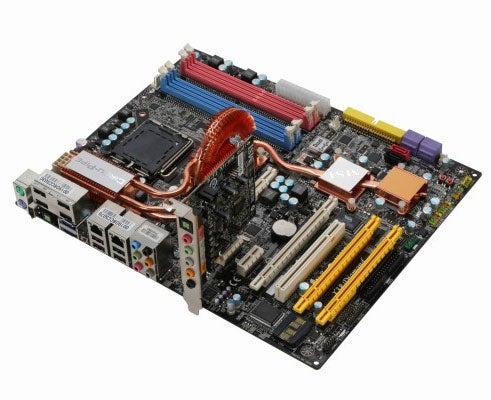
Verdict
Key Specifications
- Review Price: £179.00
I fully intended to give the MSI X38 Diamond its debut last week when I reviewed the Intel Core 2 Extreme QX9770 but I ran into a snag.
Although the X38 chipset is perfectly capable of supporting Intel’s new 1,600MHz front side bus it seems that MSI had only just received a sample of the processor so the board I had sitting on the bench worked fine with the QX9650 but wouldn’t recognize the QX9770. That was annoying but it would be harsh on MSI to blame it for not adding unofficial support for a processor that had been launched in something of a rush. 
It meant that when it came to this review I’d already spent some time in the depths of the BIOS and had come to the conclusion that it was still a work in progress. I could change the clock multiplier on the Extreme Edition processor but the front side bus was locked and so too were the voltage settings. That’s unprecedented on an MSI motherboard as the Core Cell section of the BIOS can usually be relied upon to provide hours of overclocking fun.
As such, in the case of the X38 Diamond I knew I would rapidly hit a wall, which meant that my test figures wouldn’t be directly comparable with any of the other motherboards that I’ve tested in recent times. Therefore, as the results wouldn’t be comparable anyway, I took the opportunity to plug together a test system that was slightly different to my usual set-up.
The CPU was the 3.00GHz QX9650 Penryn, along with 2GB of OCZ PC3-1333 plus my usual Hitachi 7K1000 hard drive and a new Asus GeForce 8800 GTS graphics card. The big change was using Windows Vista Ultimate Edition instead of Windows XP SP2. I use XP on my personal PC and see no reason to change at present and while Vista works well enough, it just doesn’t seem to deliver anything that I need, and I include Crysis in that sweeping statement, as it is fine in DirectX 9 on XP.
So while the test figures for the MSI X38 don’t stand direct comparison with other motherboards that I’ve reviewed but the performance was exactly what I would expect from an X38 board, so on that score the MSI is a success.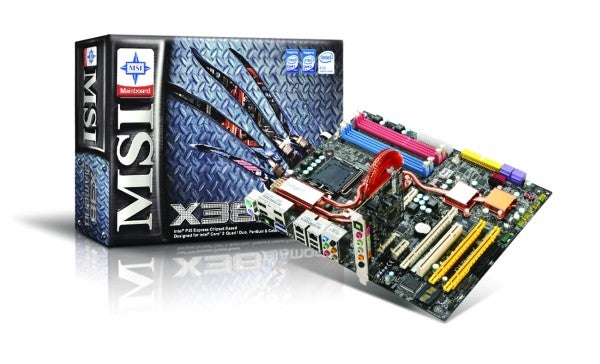
The small matters of the layout, features and price are more crucial then in deciding on a purchase. There’s a hefty passive cooling system that links the power regulation hardware, northbridge and southbridge. The heatpipe also extends to another chip, an IDT PES16T7 PCI Express controller, which looks after the two yellow PCI Express (PCIe) slots. Mechanically, these are PCIe x16 slots that have four lanes of PCIe each, in addition to the pair of blue PCIe 2.0 graphics slots that are controlled by the northbridge of the X38 chipset.
Populate the two graphics slots with a pair of double slot Radeon X1900 or HD 3870 graphics cards and you’ll find that one of the two PCIe x1 slots and the only PCI slot vanish from sight. MSI supplies a Creative X-Fi PCIe x1 audio card in the Diamond package but we’re none too sure what you’re supposed to do with the rest of those PCIe slots. Surely they can’t all be intended for CrossFire X when the drivers arrive in January.
In the package we found an MSI SkyTel VoIP riser card which connects to a header on the board and sits in the only PCI slot to keep it mechanically secure. This seemed like a questionable idea as the PCI slot is in the thick of the action but when we tried to install the VoIP card it caused Vista to hang so we put it back in the box and gave it a miss.
The four PCIe slots use MSI’s preferred retention method where the end of the slot grips the card without any need for a lock or latch which avoids all of that unnecessary cursing and swearing when you’re delving in the depths of your PC.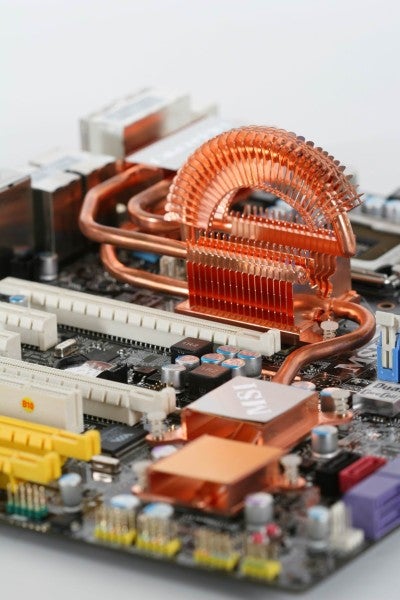
Considering how much hardware there is on the board, MSI has done a good job with the layout. The power connectors are at the edges of the board, the memory latches can be released with a graphics card in place and the IDE connector and the four SATA connectors are laid down to feed the cables away from the graphics cards. You only get four SATA connectors on the board as MSI has put two eSATA ports on the I/O panel that are also controlled by the ICH9R Southbridge. The I/O panel is stuffed with connectors including six analogue mini jacks and an optical output for the on-board Realtek audio, which is perhaps unnecessary as you’ll be using the X-Fi riser or your own sound card. There are eight USB 2.0 ports, of which four are wide-spaced, one Firewire, the two eSATA ports, two PS/2 ports, dual Gigabit LAN and a Clear CMOS button.
There are a couple of minor gripes. I counted six blue, red and green LEDs scattered across the X38 Diamond, which just appear to be there for cosmetic reasons. All I really want is one LED to show that the power is on thanks. I also wasn’t best pleased that the Power and Reset micro buttons are located too close together with and with only the tiniest lettering to tell them apart. 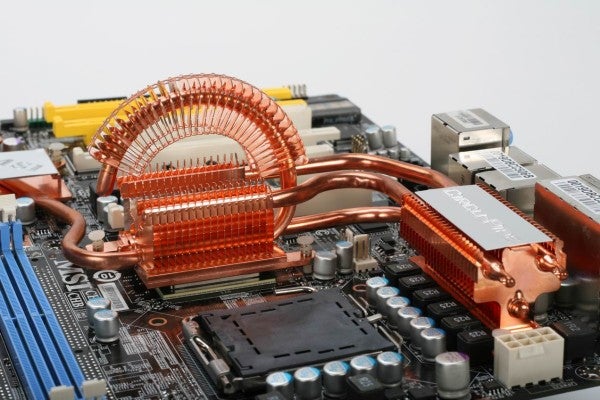
One final feature that stands out is the diagnostic LED. We used to get Morse beep codes, which were hopeless, then MSI used its D-bracket with a series of LEDs that generated a diagnostic code that you could cross-reference with the manual to nail down a problem, but now MSI has gone one step further. The X38 Diamond has an LCD display that actually spells out the problem, albeit in four letters. During the POST stage the display cycles through CPU, DDR3, ICH, CLK, ATA and so on until it displays the MSI logo. It’s much better than previous systems but like all insurance you’d be happier if you never have to use it for real.
”’Verdict”’
MSI has loaded its X38 Diamond with ports and connectors as well as a prodigious amount of PCI Express. Now we just need a BIOS that supports a 1,600MHz FSB and we’ll be happy bunnies.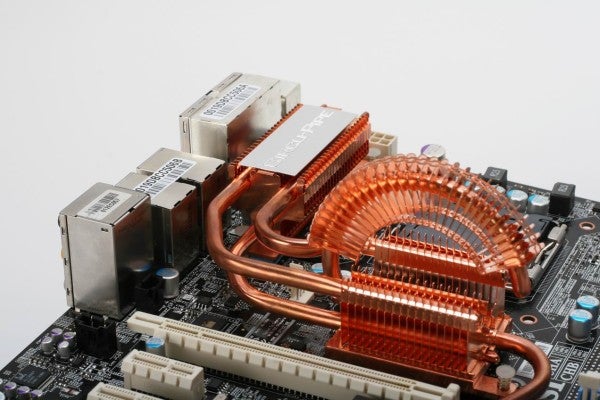
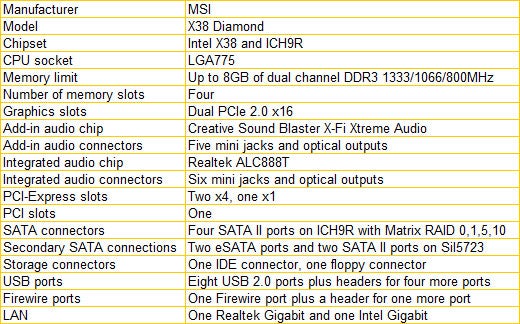
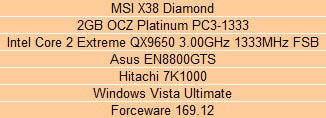
—-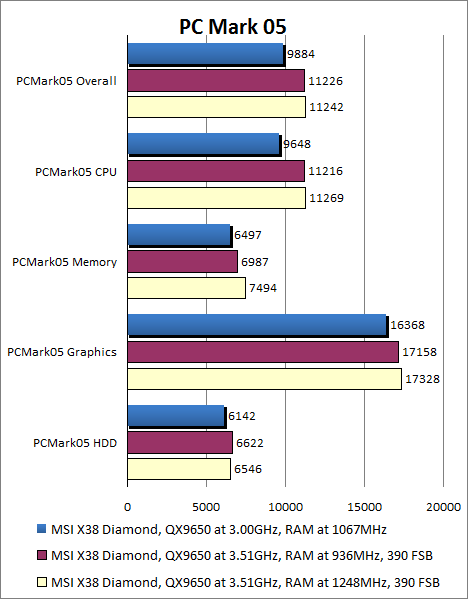
—-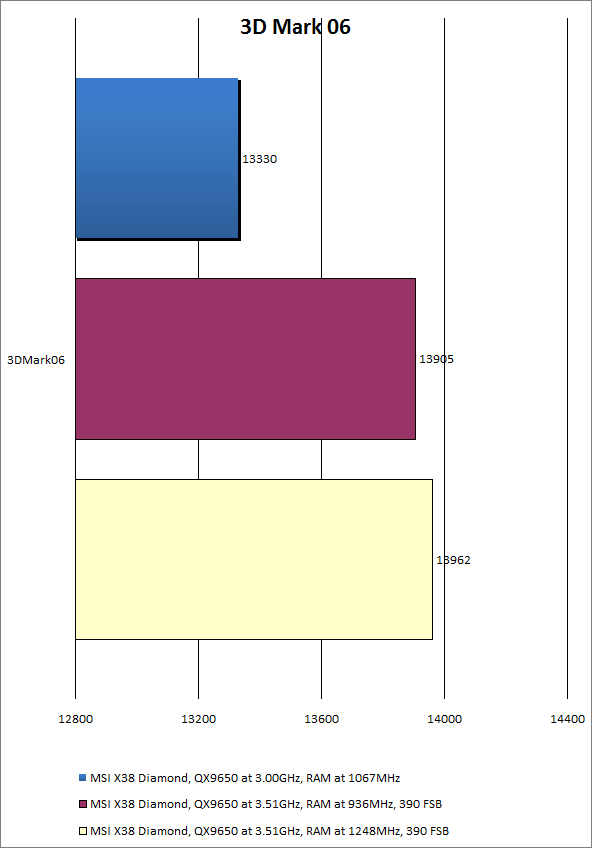
—-
Trusted Score
Score in detail
-
Value 8
-
Performance 9

